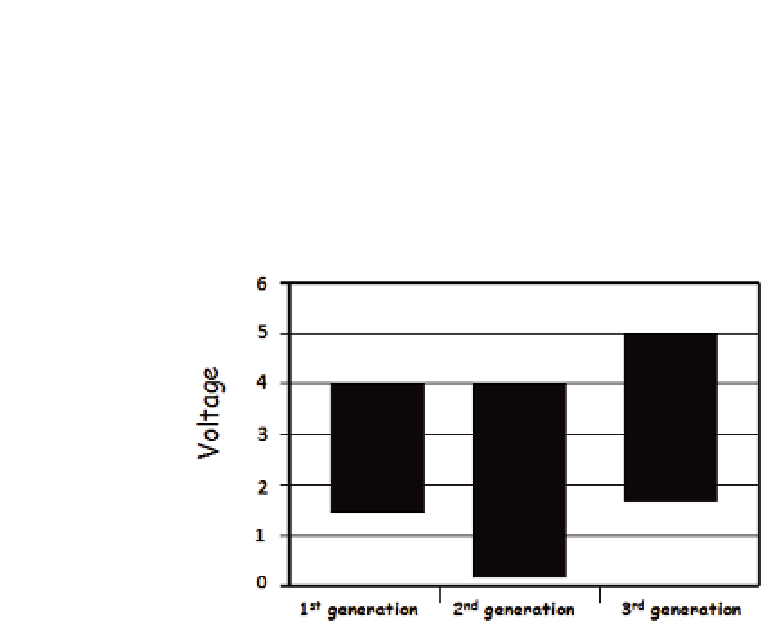Biomedical Engineering Reference
In-Depth Information
as
cathode material. Larger specific capacities and higher cell voltages
were obtained for the second-generation batteries, compared with
the first-generation batteries (Fig. 5.2). During the past 10 years,
remarkable efforts have been made by many research groups in
order to improve the performances of the electrodes
lithium at low voltage during the charge of the cell, and Li
1-
CoO
x
2
Figure 5.2
Schematic comparison between the different potential windows
in the three successive generations of rocking-chair systems. Reprinted from
Mater. Sci. Eng. R.
, 40(3), José L. Tirado, “Inorganic materials for the negative
electrode of lithium-ion batteries: state-of-the-art and future prospects,”
103-136, (2003), with permission from Elsevier.
and the electrolyte of the lithium-ion battery [14-16 ]. Two lines of
research can be distinguished: (i) improvement of LiCoO
and carbon-
based materials and (ii) replacement of the electrode materials
with others with different composition and structure. Concerning
the positive electrode, the replacement of lithium cobaltate has
been shown to be a difficult task. In this direction, Tarascon et al.
gave new impetus to the development of rocking-chair batteries by
using LiMn
2
as cathode [17]. Lithium manganese spinel oxide and
the olivine LiFePO
4
O
4
2
are the most promising candidates up to now
[18]. These materials have their useful electrochemical reaction
in the 3-4 V region, which is appropriate when combined with a
negative electrode having a potential sufficiently close to lithium.
More recently, 5 V materials have emerged as a different option, e.g.,
LiNi
Mn
O
and LiCoPO
4
[19, 20]. The high working potential of
0.5
0.5
4








Search WWH ::

Custom Search